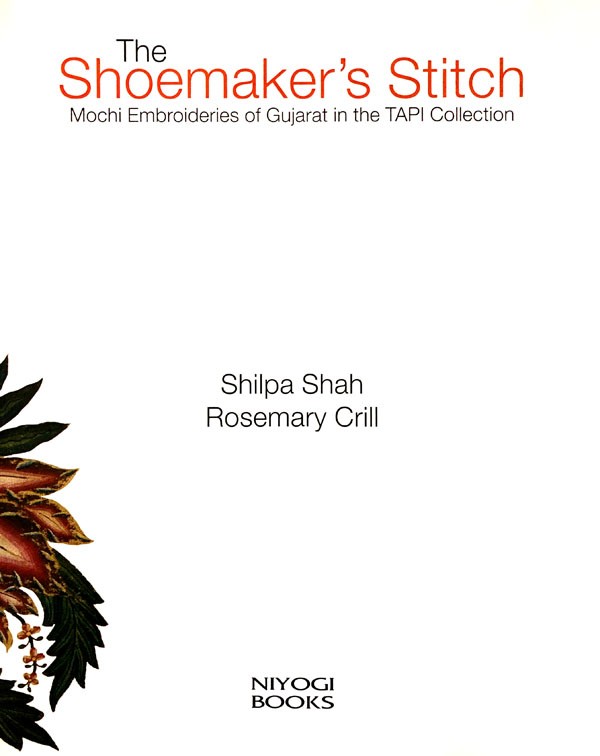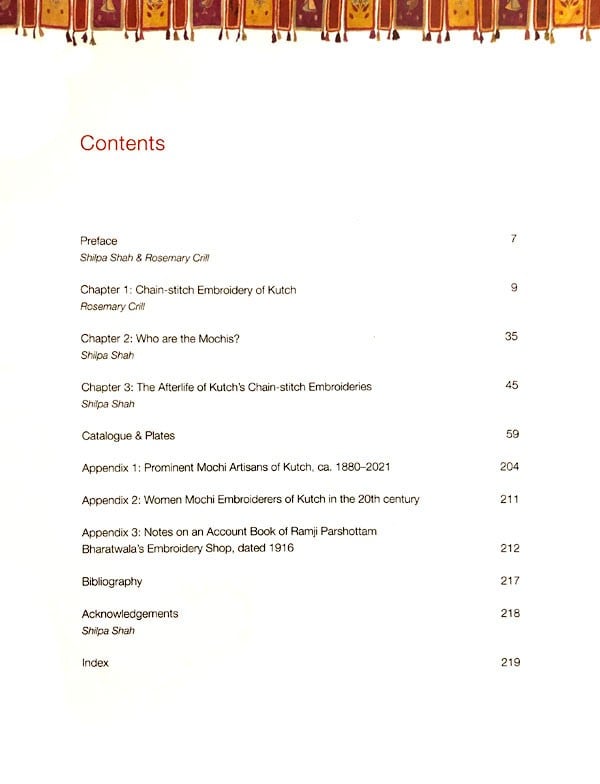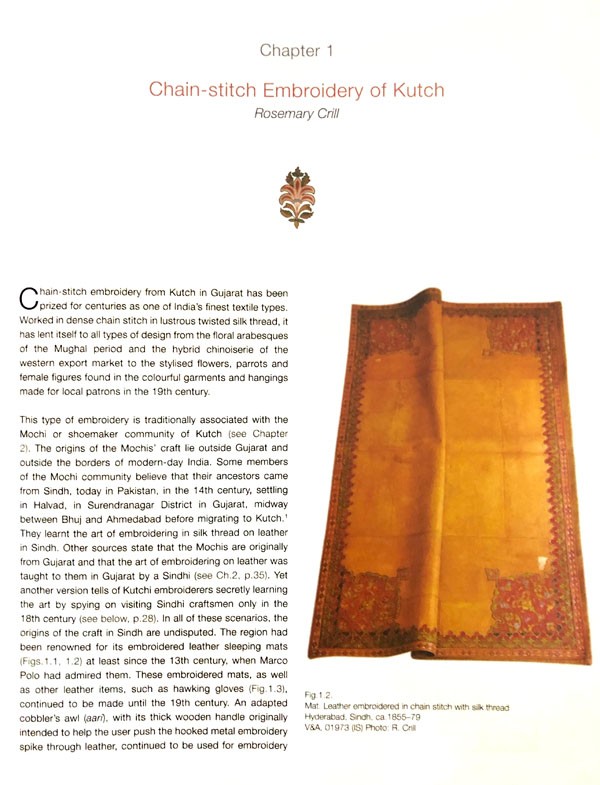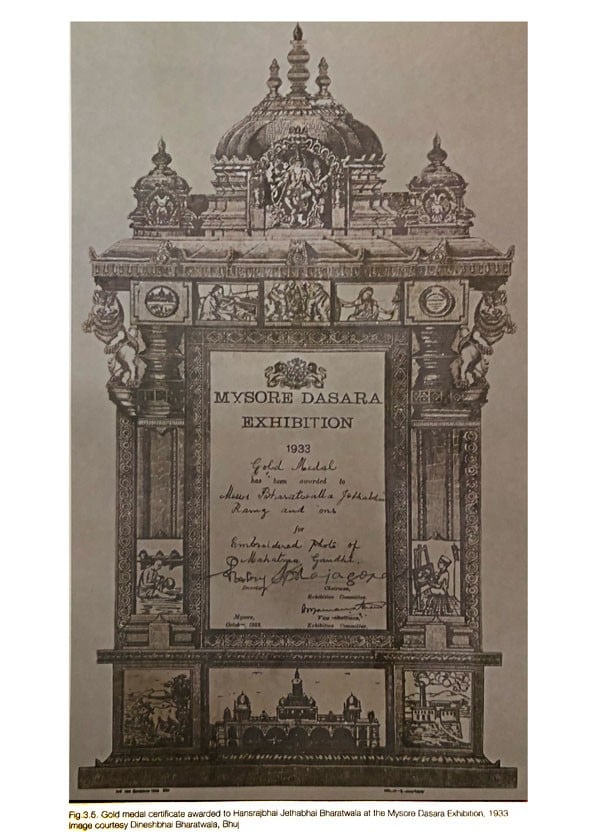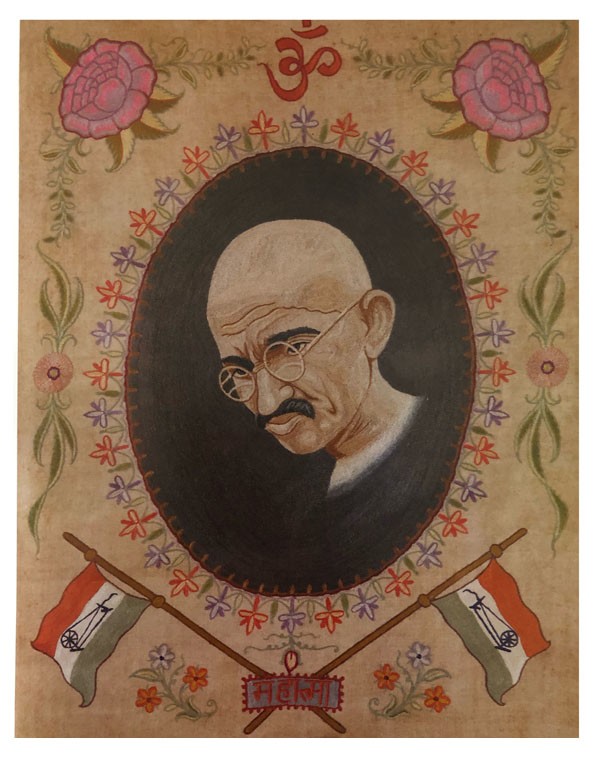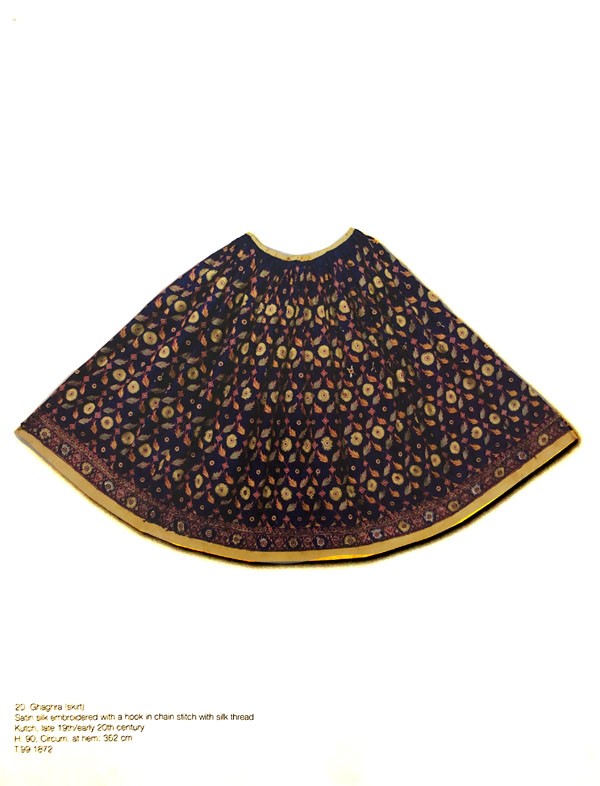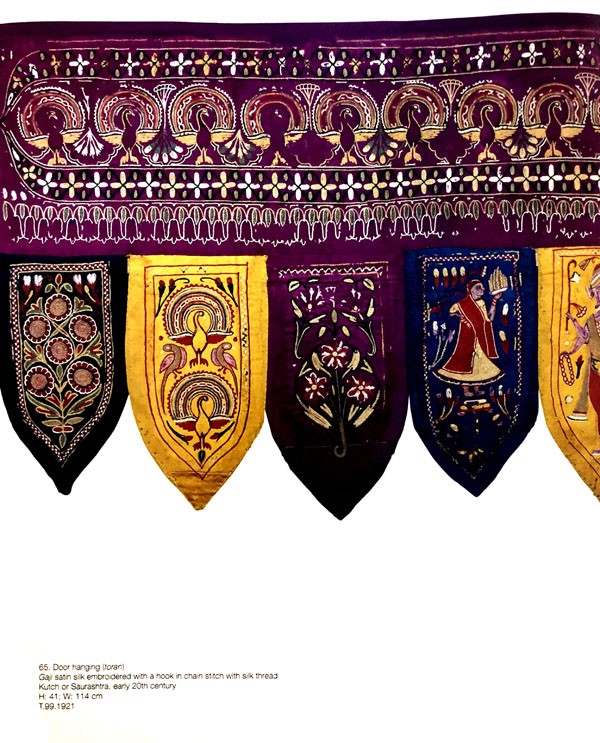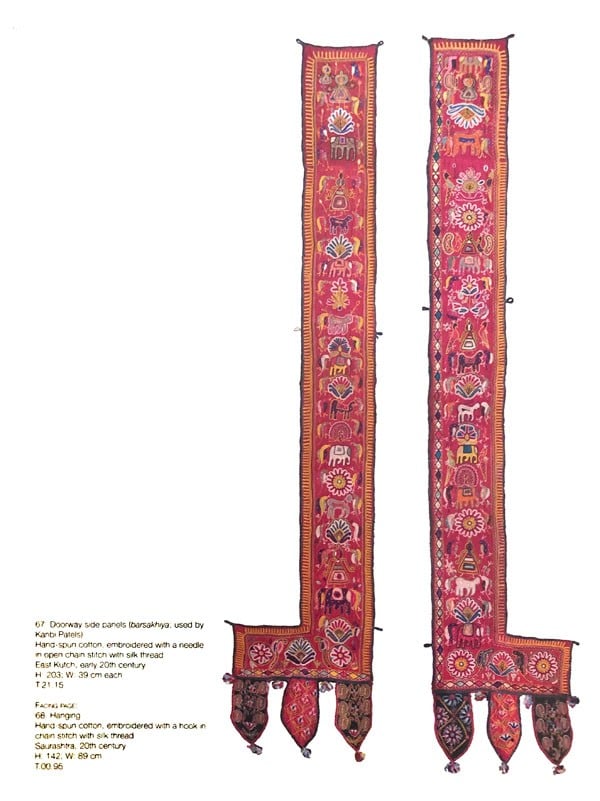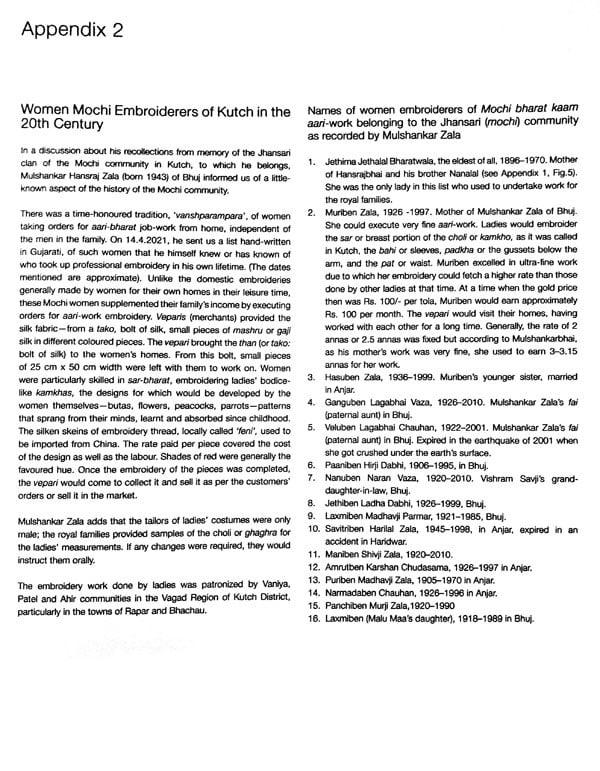
The Shoemaker's Stitch- Mochi Embroideries of Gujarat in the TAPI Collection
Book Specification
| Item Code: | UAR377 |
| Author: | Shilpa Shah & Rosemary Crill |
| Publisher: | Niyogi Books |
| Language: | English |
| Edition: | 2022 |
| ISBN: | 9789391125455 |
| Pages: | 220 (Throughout Color Illustrations) |
| Cover: | HARDCOVER |
| Other Details | 13.00 X 10.00 inch |
| Weight | 1.64 kg |
Book Description
The exquisite chain-stitch embroideries of Gujarat's Mochi community are found in museum and private collections the world over, but the origins of the Mochis and their craftsmanship are rarely explored. This book is the first to delve deeply into the history of chain-stitch embroidery in India and its connections to the Mochi or shoemaker community.
This work focusses on chain-stitch embroideries from the 18th to 20th centuries in the renowned TAPI Collection of textiles, with many pieces having direct links both to Gujarati royal families and the lineage of Mochi craftsmen and women. The previously unknown but significant role of the women of the Mochi community in creating embroidery pieces is also explored.
The catalogue of images displays a wide range of exquisitely embroidered pieces ranging from Jain manuscript covers to portraits, items of clothing. fans, and furnishings, such as floor spreads, wall hangings and tent panels. The accompanying essays provide the background history of the Mochis and their work and also shed fresh light on chain-stitch embroideries in museums and private collections previously thought to be from the Mughal period. The book also gives an account of the contemporary scene, in which chain-stitch embroidery has found new directions and new audiences worldwide.
Shilpa Shah is the co-founder of the TAPI Collection of Indian Textiles and Art. She researches and writes articles on Indian textile art, and holds an M.A. degree from the University of California, Berkeley.
Rosemary Crill was Senior Curator for South Asia at the Victoria & Albert Museum in London until her retirement in 2016. Her books include Indian Embroidery, Marwar Painting, Indian Ikat Textiles, Chintz: Indian Textiles for the West and The Fabric of India.
At a time of dizzying innovations in digital graphics, the work of nimble-fingered, age-old skills of Ab embroidery remains to be surpassed. This study is an attempt to pay tribute to the unnamed masters of a class of exquisite, regional stitch craft known as mochi-bharat, embroidery created by Mochis. Belonging to the humble shoemaker community of Gujarat in western India, they were unrivalled professionals of chain-stitch embroidery, locally known as aari work, after the shoemaker's tool which the Mochis adapted so deftly to use on cloth rather than leather.
With this publication, the TAPI Collection draws attention to the work of those forgotten masters-to the painstaking precision, the deft artistry of their work and the delicacy and beauty of chain-stitch embroideries executed by Mochi craftsmen over centuries. Several of the pieces shown belonged to members of the Kutch royal family, underscoring the high regard in which these embroideries were held. Their use as royal furnishings as well as dress is highlighted by the magnificent embroidered tent in Dhrangadhra and the colourful dado panels made for the Aina Mahal palace in Bhuj, both published here more extensively than has previously been possible.
Presented here is a spectrum of Mochi embroideries from the TAPI Collection-examples ranging from embroidered palampores traded to Europe in the 17th and 18th centuries, used in the Mughal and regional courts, those specifically made for ceremonial events and festive home décor, used for religious purposes, and garments made to satisfy the sartorial tastes of courtly and elite women of Gujarat. especially Kutch, well into the mid-20th century. The story of what happened to Mochi embroidery in the period thereafter is told in the pages that follow.
A particularly gratifying aspect of this project has been learning from conversations with two stalwarts of the Mochi community in Bhuj. Hailing from families of traditional shoemakers and embroiderers who are attempting to align their ancestral professions with demands of 21st century consumers, Mulshankarbhai Zala and Dineshbhai Bharatwala, have been unstintingly generous in sharing their received knowledge as well as samples of their forefathers' works passed down to them. Their involvement has allowed us to delve more deeply into the genealogies of the Mochi families who produced these remarkable works of craftsmanship, and also to set the record straight by including the names of several significant female embroiderers
Although Mochi embroideries are featured in almost all catalogues of Indian textiles, whether in private collections or museums, we believe this is the first catalogue dedicated to this unique art form. It has been a privilege to be able to collect and document examples of both historic and contemporary chain stitch embroideries, and to see the skill being taken forward into the modern world by the inheritors of the shoemaker's craft.
**Contents and Sample Pages**
